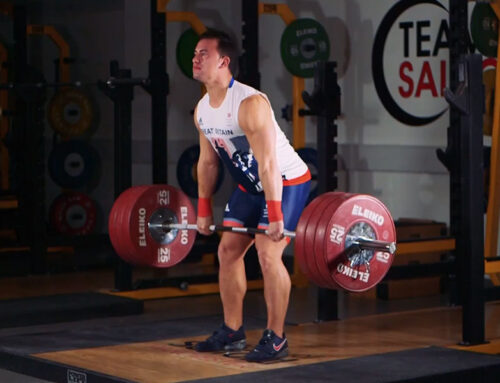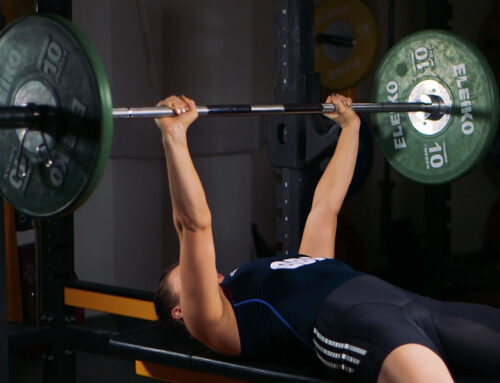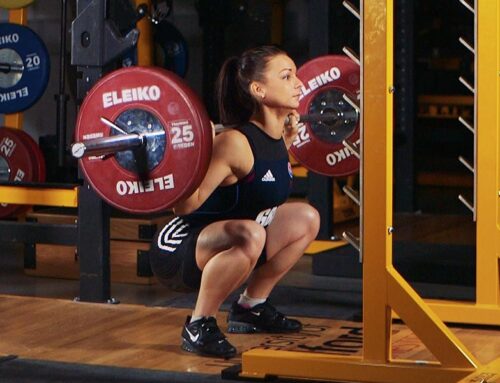My ‘better’ is better than your ‘better’
Before we start we need to look at exactly what relative strength is within fitness and why it’s so important to take it into account when analysing someone’s level of strength. Traditionally we have a tendency to measure strength by the total amount of weight in kilos or pounds that can be lifted in any given movement. In other words, how many plates you put onto the bar, ultimately determines how you and everyone else in the gym views your level of strength.

Before we start we need to look at exactly what relative strength is and why it’s so important to take it into account when analysing someone’s level of strength. Traditionally we have a tendency to measure strength by the total amount of weight in kilos or pounds that can be lifted in any given movement. In other words, how many plates you put onto the bar, ultimately determines how you and everyone else in the gym views your level of strength.
Why is it then that in other sports we recognise this kind of evaluation as ‘flawed’, yet we still can’t get past it in the gym environment? The first question when you get talking to someone in the gym is normally ‘what’s your bench?’ or ‘how much are you squatting these days?’ The response everyone wants is what we refer to as Total Load Lifted [TLL], because it normally sounds more impressive. We have ingrained, imaginary benchmarks that we believe are to be considered acceptable. 2 plates on a bench press is universally greeted by a nod of the head or a ‘that’s a good bench’ comment from the gym fraternity for no other reason than it has been passed down by generations of lifters as the weight that determines how worthy you are to be on the bench in the first place.
When we talk about boxers, we talk about who is the best pound for pound as it would be stupid to try and compare the likes of Mayweather and Tyson in a straight up comparison. But by just looking at the total weight lifted on a bar, and disregarding what the person lifting it looks like, we are only getting a fraction of the information we need to decide if that person is strong or not. You’ll get the occasional remark like, ‘that’s a good lift for someone of your size’, or ‘I’d have thought a big lad like you would be lifting more than that’. This shows that underneath all of the bravado they actually understand the concept of relative strength, it’s just that they aren’t applying it in the right context like they would in other scenarios or sports.
We back this understanding up further with ‘well of course he/she is going to run faster than I do because look at them’. This is making reference to what someone looks like in order to evaluate how good he or she is going to be. What they are really saying is, that person is bigger, smaller or thinner than I am and therefore it only makes sense that they would be able to do the thing we are doing better than I can.
They say that things said in jest often contain elements of truth, and non-more so than when people say things like this. If we’re talking about shifting load then the bigger you are the more you will probably be able to move. If we’re talking about running, then the lighter you are the better your chances of moving that weight across a surface in a faster time. ‘I’m twice his age so of course he will be better than me’ is another one. We intuitively recognise this to be the case, and in most cases it is actually true but we can’t take it as gospel, we need to take a bit more of a scientific approach to truly determine who’s ‘better’ is actually better.
So we now know that you can’t determine someone’s strength on just load lifted, nor can their performance be solely judged on size, mass or age. To get a true representation we must take all of these factors into account and only then can we then start to understand if someone is strong or not.
Relative strength is actually a very easy concept, it’s purely the Total Load Lifted [TLL] divided by the weight of the person lifting it, in order to give you a ratio. An example would be someone weighing 75kg that lifts 115kg, is lifting at a ratio of 1.53 times his or her own bodyweight (75/115).
This is the first step (of many) to determine a person’s strength profile.
Strength Test
In order to determine someone’s true strength, the first thing you need to do is find out how much someone can in fact lift, but this initial assessments needs to be done under a certain set of criteria. This criteria needs to be designed in such a way that every time you assess your capability you will do it in the same way each time in order to become repeatable, valid and produce reliable results. Without criteria an assessment is useless and the information you receive is unreliable and therefore of no real use when it comes to evaluating strength.
And then comes the performance of the actual assessment(s), this needs to be at maximum effort. There should be no reps in reserve and therefore it’s important to use a spotter whenever possible for safety.
Once you’re benched, squatted, deadlifted or snatched your best weights – this is when the fun part begins. Remember, at this point the total amount of weight lifted is purely used as part of a bigger calculation.
Below we show an example to create a comparison and highlight just how different looking at total load lifted [TTL] can be when comparing it to relative strength.
Person A
Weighs 79kg and benches 88kg for their one rep max
Person B
Weighs 65kg and benches 73kg for their one rep max
On the surface Person A is the strongest as they are lifting 15kg more than Person B. But using the relative strength calculation we create a very different outcome. Person A is lifting at a ratio of 1.11 whereas Person B, even though they are lifting less total weight, is lifting at a ratio of 1.12. This therefore means that Person B is actually stronger, as they are lifting at a higher proportion of their bodyweight.
Now this is only part of the story. We then need to dig a little deeper. We need to know a bit more about Person A & B and we find out that Person A, is Male and Person B is Female and both 31 years old. So how does this change, or indeed, does it change the result?
Floors and Ceilings
Everyone, regardless of gender, age, height or weight has what we call ‘a floor and a ceiling’ to their ability in any given activity. We often refer to it as potential, this person has a greater potential than that person, but it’s often predicated on theories rather than facts. But we can apply facts to this scenario to see if Person A or Person B has the greater potential, and if so who out of the two is better situated between their floor and ceiling in the bench press. This would indicate a higher level of performance and therefore better result.
As part of the Archon Combine system we undertook mass data research in order to assess Floors and Ceilings for all combinations of age, gender, height, weight and wingspan to ensure we had the parameters for every individual’s scenario.
By checking against the parameters outlined within our system, in this example each person’s floor to ceiling ratios calculate as follows:
Person A
Their floor in terms of relative strength for a bench press is 0.47, and their ceiling stands at 1.62
Person B
Their floor in terms of relative strength for a bench press is 0.33, and their ceiling stands at 1.18
Now when you look at their respective bench ratios of 1.11 and 1.12, it now looks even further in favour of Person B, as they are right up close to their ceiling where as Person A still has a way to go. But this also means that Person A has the higher potential whilst Person B has the better current performance level.
Then there’s body mass, not body weight. This is how much fat you have on your body in relation to fat-free mass. Relative strength is highly affected by body mass over TLL. Adding load to increase your ratio is a slow process, good lifters could only see a 5kg increase over a 12-month period, which would only improve their ratio by a very small amount. However, if you have excess body fat, which you can decrease by improving your nutrition and taking a more holistic look at your performance, can have a huge impact on your relative strength ratio.
Personal Bests
When it comes to personal bests it’s going to be much easier to create them if you look at relative strength ratios rather than TTL. Motivation and adherence to training is often directly proportionate to how much progress you make, the more progress you see the more motivation and adherence to continue. So if you want all the personal bests that you can and keep yourself motivated then it’s time to change the emphasis of your training.
Being better is the best thing you can do and we want to show you how much better you can become. Archon Combine software allows you to do the basics whilst we do the dirty work. We’ve sorted out your criteria with some of the best in the world, we’ve created a valid, reliable, and repeatable testing protocol that allows you to just go and do your thing in the gym – go and lift, run, row, jump, cycle and more and get all the PB’s you deserve.




